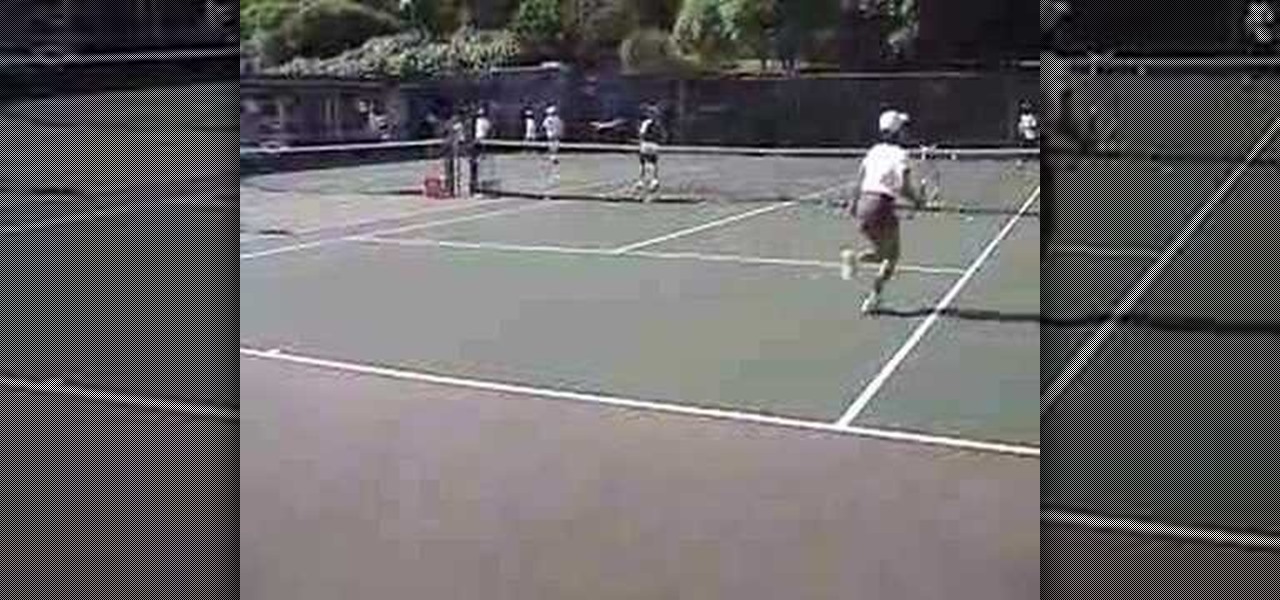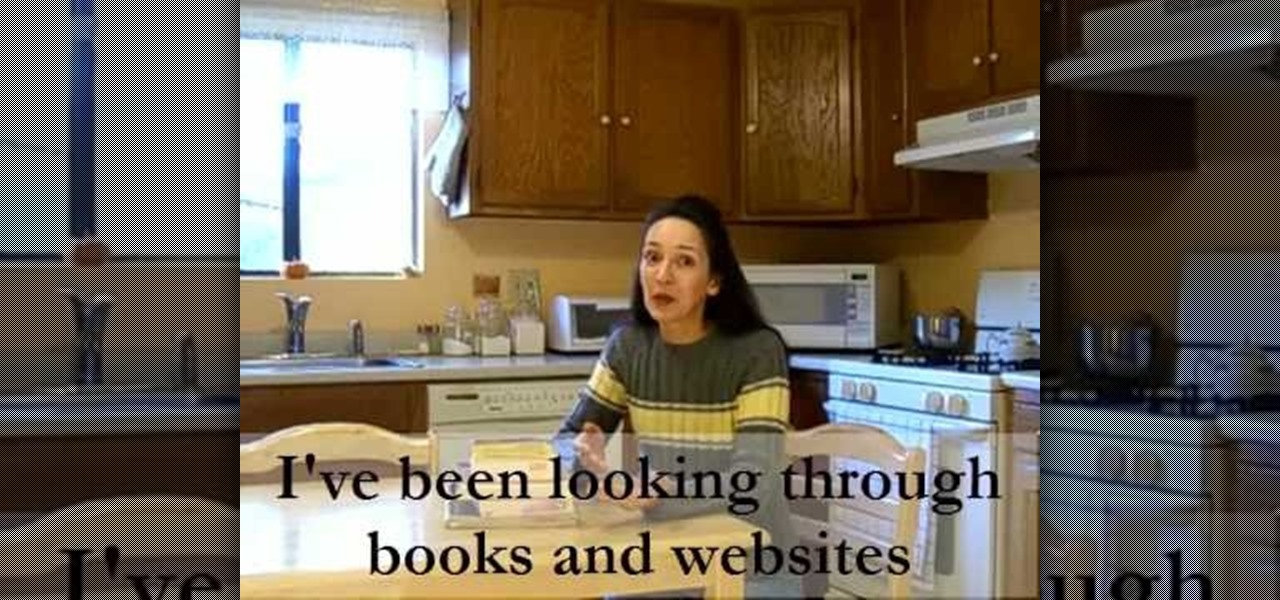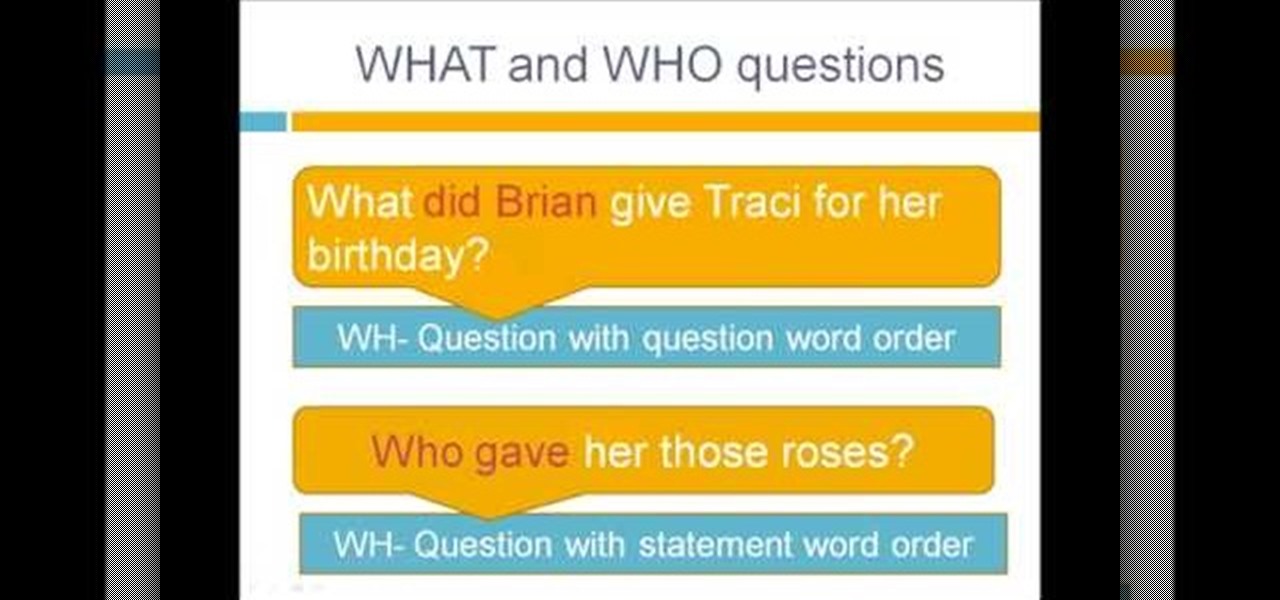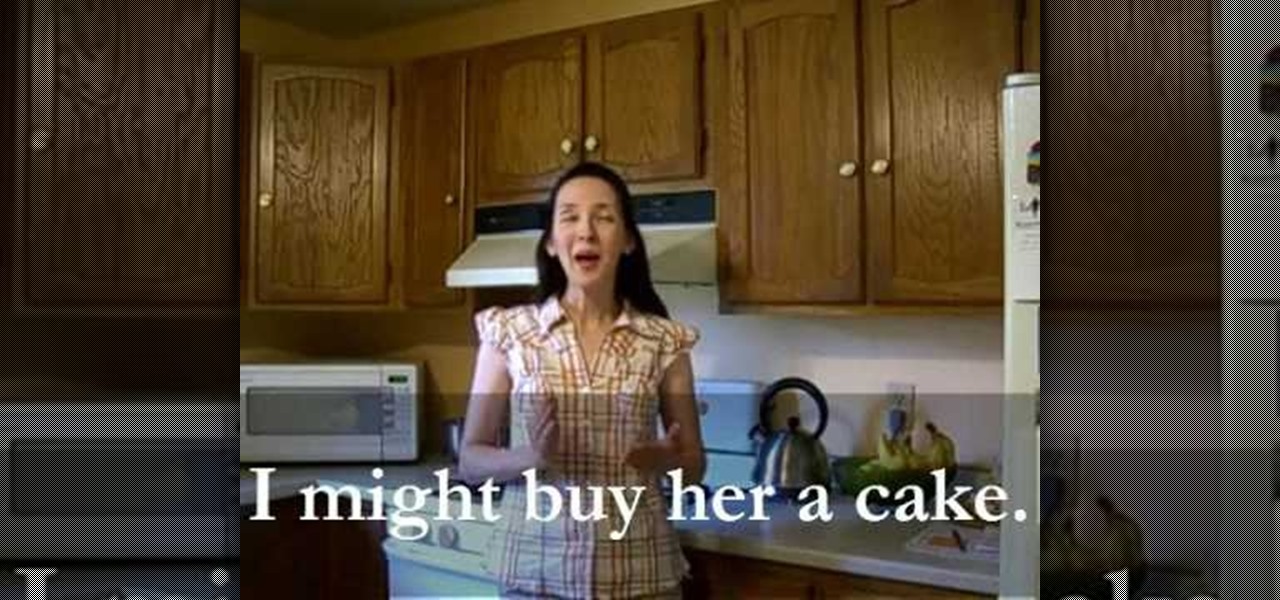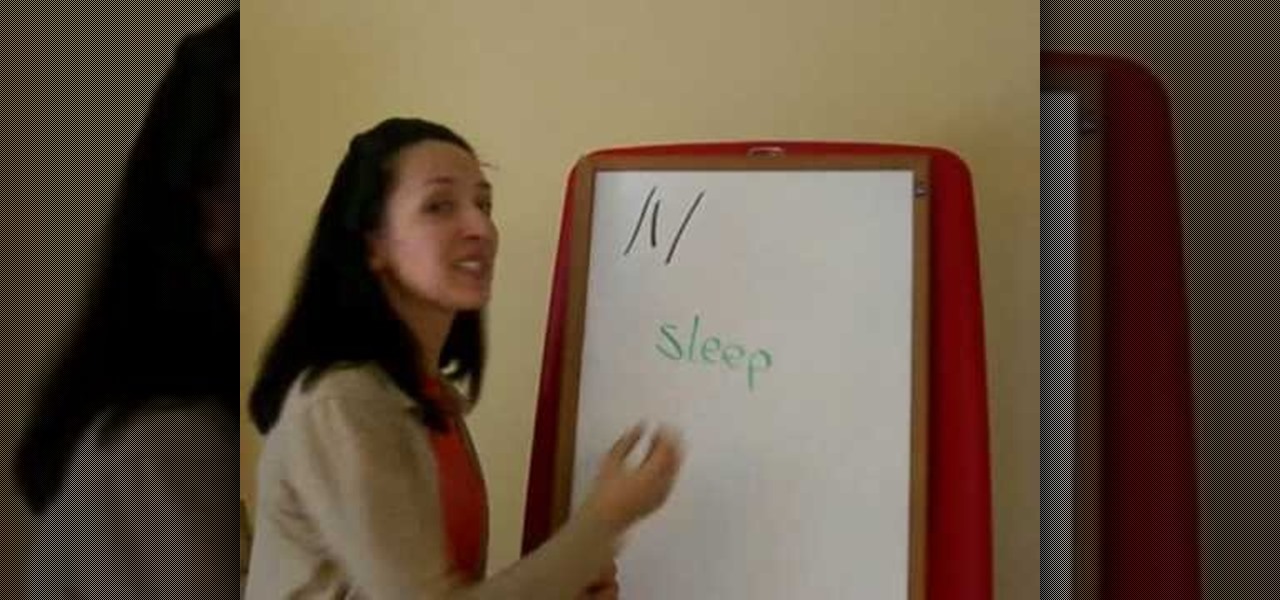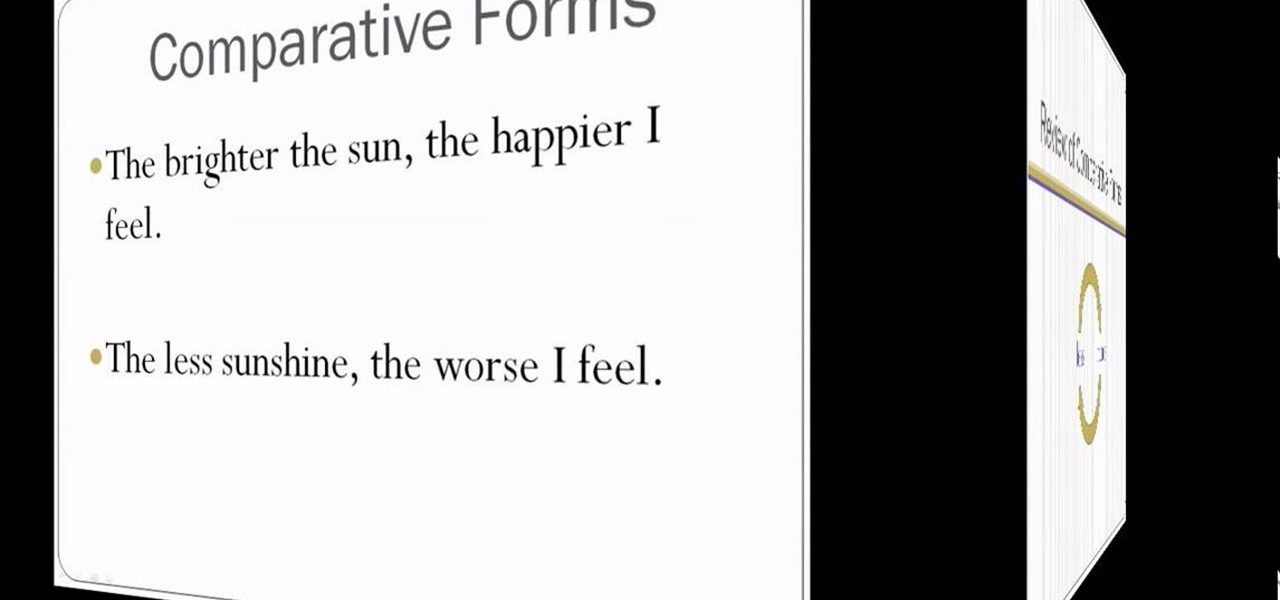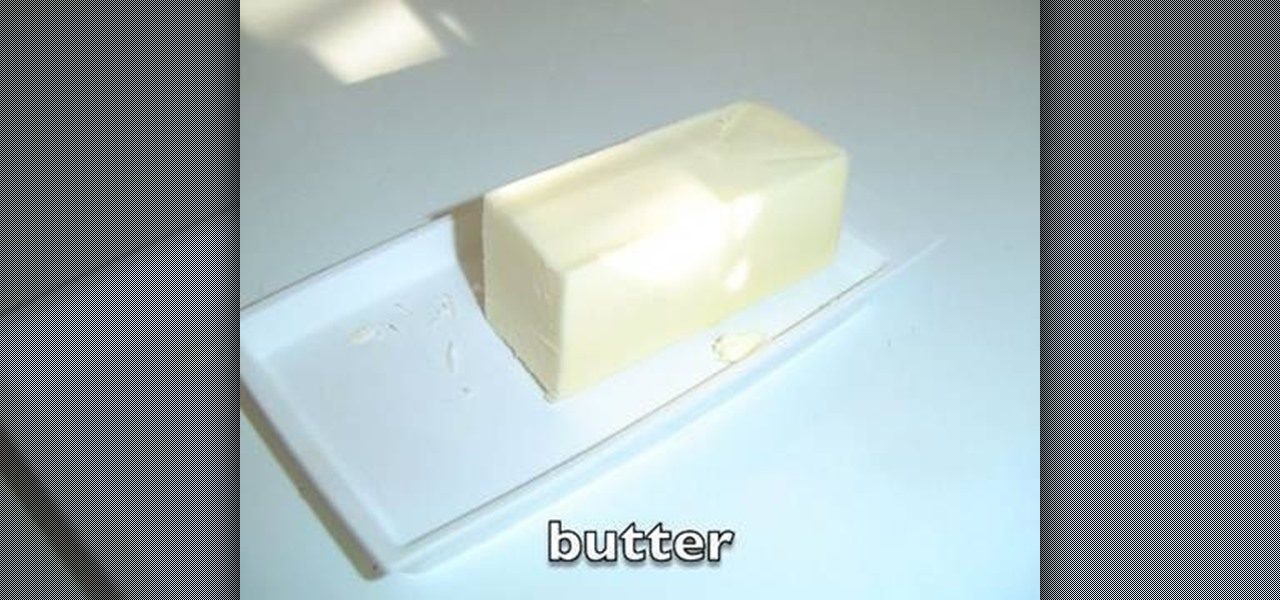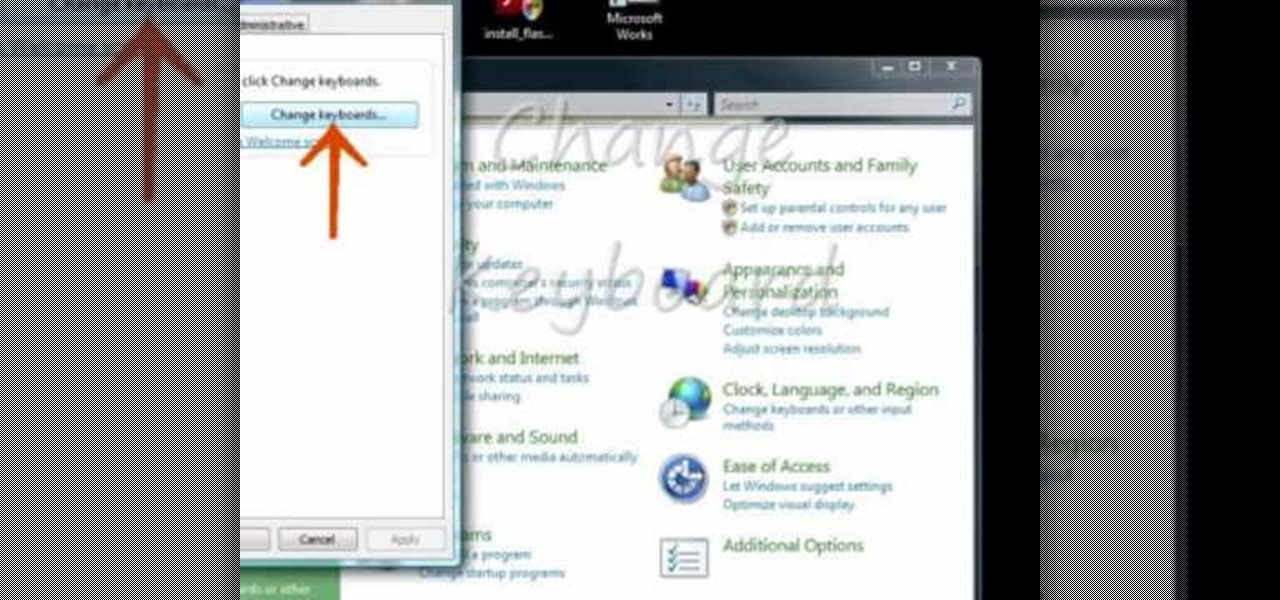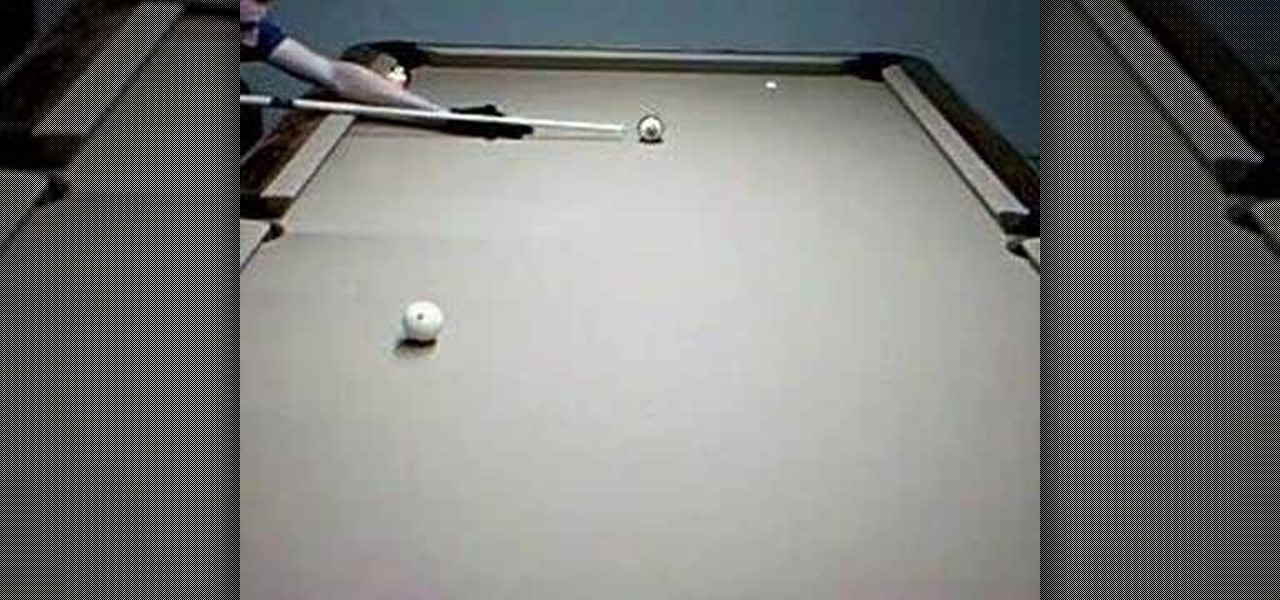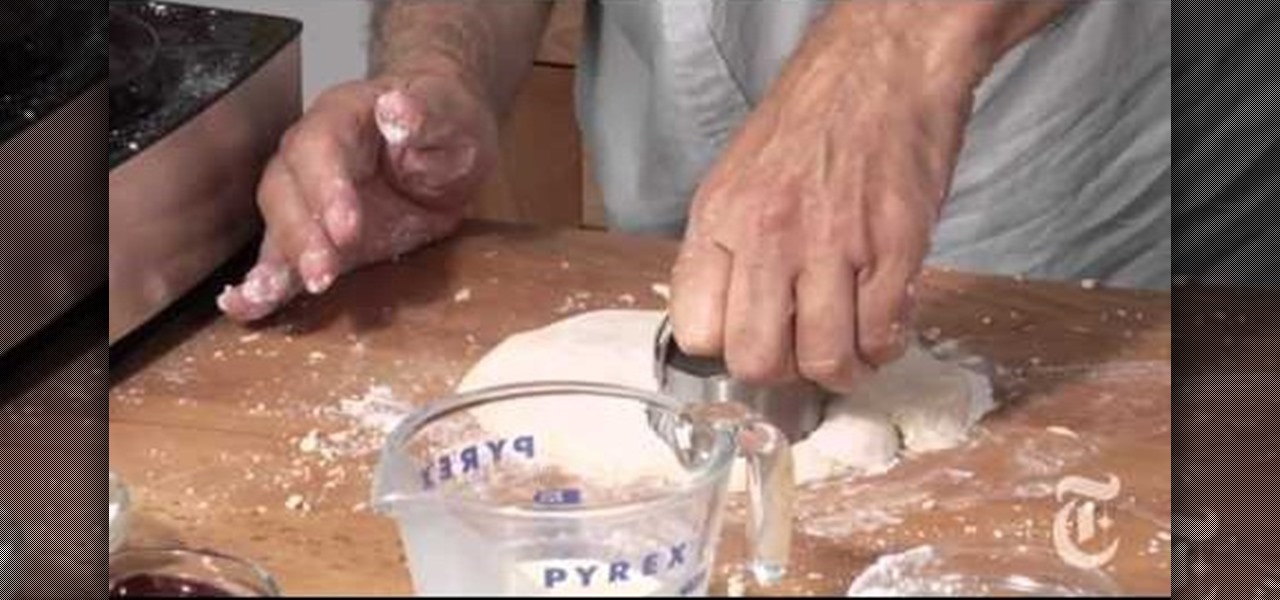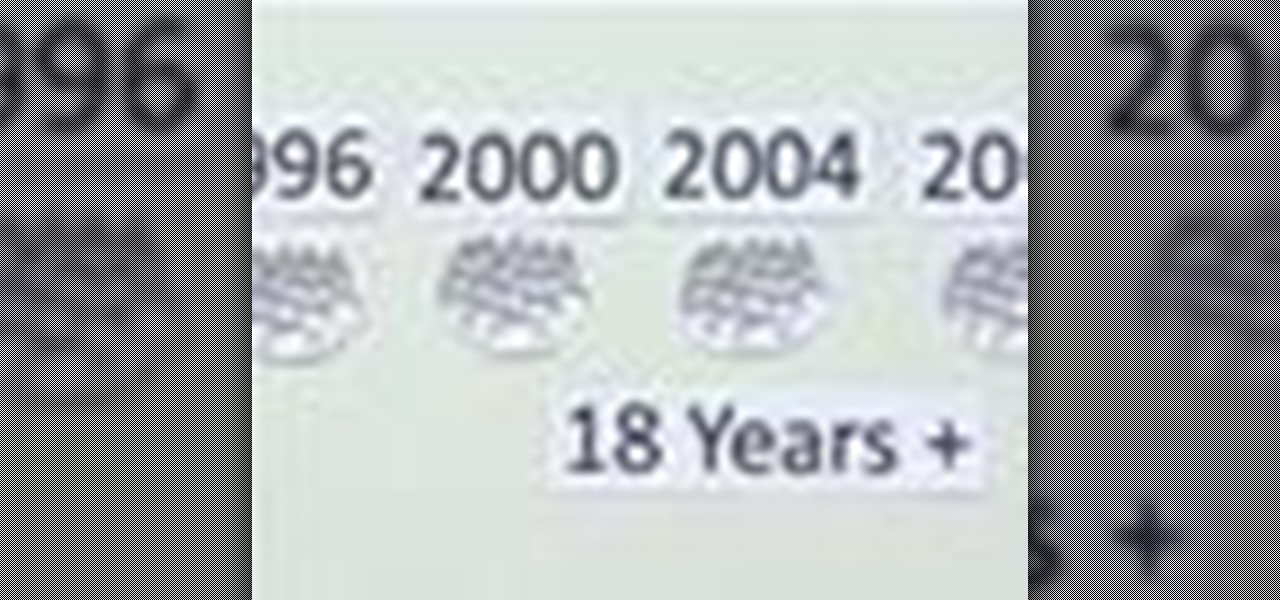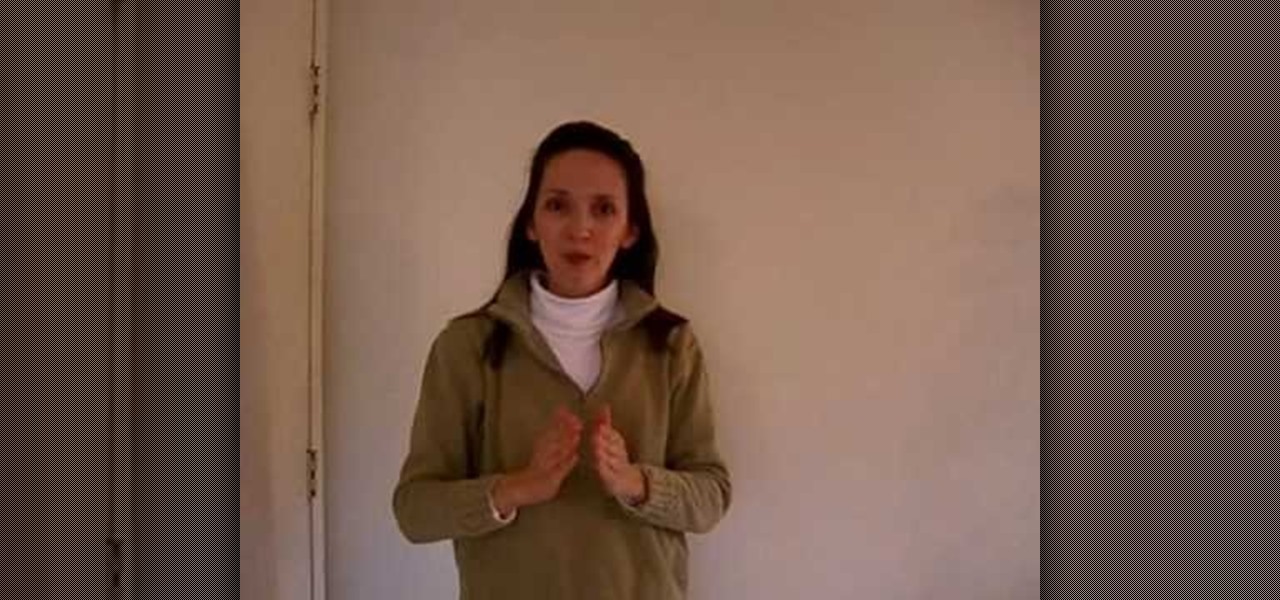
In this tutorial, we learn how to speak English: The glottal stop in place of the true T. When you are saying a word like "fountain" you are using a word that has a glottal stop. If you can say two common expressions "uh-oh" and "uh-uh", then you can make a glottal stop. You need to use your throat to make this sound, it's like holding your breath but using the back of your throat to do it. Try to break the word "fountain" into two different parts so you can hear the different in your voice a...

In this tutorial, we learn how to speak English: Imperatives or reporting verbs. Imperative sentences are sentences like "open it!", where you are asking someone to perform an action. You can also say this in a nice fashion, asking "please open it". There are many different forms of imperative sentences, which include: commands/orders, directions, instructions, requests, and warnings. All of these different types of sentences are asking someone to do something, just changing up the way they d...
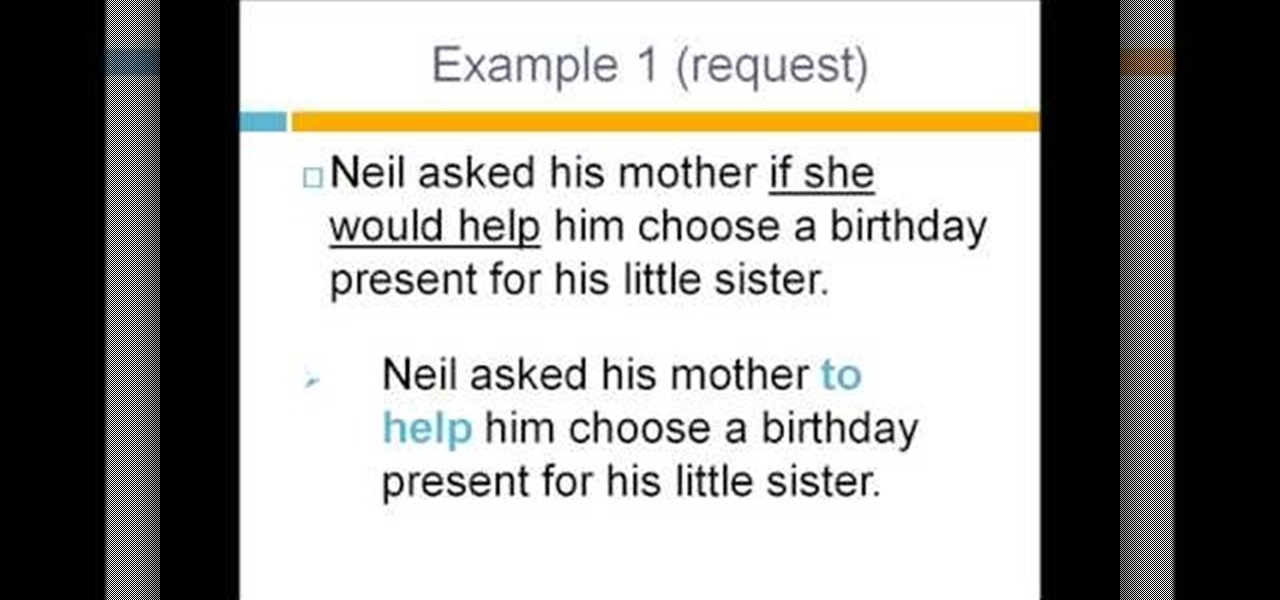
In this tutorial, we learn how to speak English using infinitives for questions. First, you need to be able to identify reported questions inside of a conversation. Infinitives include words like "to go", "to buy", "to find". They are formed by saying "to" + the verb. "Wh" infinitives are simply at the beginning of infinitives, like "where to go", "when to buy", and "how to find". Use infinitives to report questions that have modal verbs such as "should" and "can" depending on what the modal ...
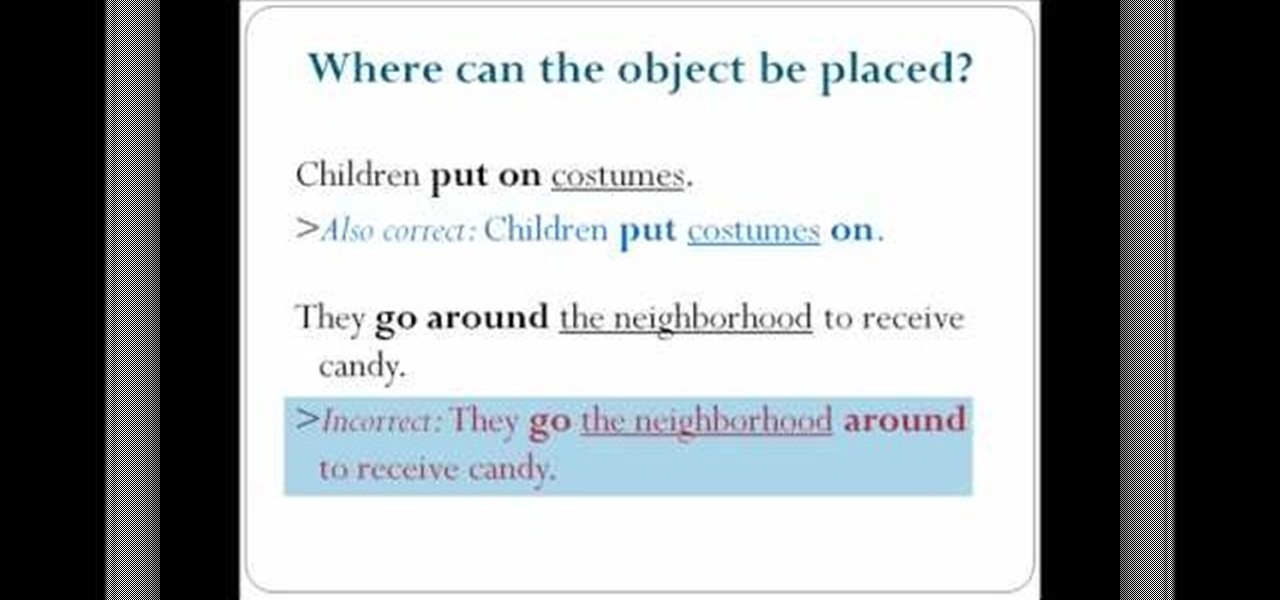
In this video, we learn how to speak English by changing the structure of phrasal verbs. Phrasal verbs can be transitive or intransitive, which means followed or not followed by an object. Transitive phrasal verbs can be separable or inseparable, which means the object can come between the verb and a particle. With a phrasal verb that is separable, pronouns as direct object must be placed between the verb and its particle. Examples of this include: children put on costumes, children put costu...

In this video series, let Rachel Dayan teach you how to make homemade bagels and English muffins. She shows you the simple ingredients you need to make these truly tasty breakfast staples. Learn how to make and kneed dough. Also, learn how to boil and bake bagels.

This is a basic orientation chat for new English teachers about how to go about organizing your thinking when you get into teaching English. You are in control. Remember that!

Reading the augmented reality news lately has felt a bit like reading a John Grisham novel, as the business side of things has dripped with legal drama.

The sun-drenched people of Phoenix can now sign up to ride in an automated car, for free, courtesy of Waymo. The Alphabet affiliate announced its "early ride program," which will (hopefully) demonstrate how self-driving cars will fit into people's everyday lives. Highlighting a challenge Nissan CEO Carlos Ghosn has spoken about that faces the driverless industry.

In this video learn how to run a drill to practice the cross court. This is basically an on line drill modified, the players are hitting a running forehand and then, playing it out.

In this video, we learn how to speak English: An introduction to phrasal verbs. Phrasal verbs are also called two-part and three-part verbs. This is a verb and one or two other short words. Together as a phrase these have a special meaning. The other words are called particles, which come together with the verb to make a different definition. Particles can change the word "figure" to "figure out" and the word "look" to "look through". These particles at the end of the verb change how the word...

A video that is essentially a part of series of videos, that deal with teaching indirect speech basics to intermediate and above level English language learners.

In this video, we learn how to speak English: reported speech with modals. Modal verbs include: must, should, and could. The expressions include: have to and supposed to. By reading the sentences, you will see which words can or cannot be changed. If the word changes the meaning of the sentence, you cannot use it with the sentence. In reported speech, you do not change perfect modals, which are word that are in their past forms. Modal verbs that do change include "can" being switched to "coul...

In this tutorial, we learn how to speak English with conditionals. Conditional statements need special attention and usually start with the word "if". An example of a conditional statement is "if you want, we'll go out to dinner". This has two parts, a condition, and a result. The condition is expressed by "if". To report them, don't change the verbs unless you're dealing with a real condition. Look and see if verb tenses can change depending on how the sentence is structured. Try to remember...

In this tutorial, we learn pronunciation tips to Speak English. To help someone learn this, use an analogy, imagery, and vivid explanation so they understand what you are talking about in full detail. Use your hands to make the motions, then relate words to your base words. You will need to repeat yourself a lot, and also draw pictures so it can help them visually understand. Don't use difficult words, just start by doing simple words that are easy to understand. Once the easy letters are und...

This is a tutorial segment of Double comparatives of English Grammar. In this lesson, the instructor is explaining about how to express a cause and an effect in a easier way with examples. She says that it’s the relationship where one thing makes a change on another or one factor say for example sunshine, produce a result in another by making us to feel happy. Comparative forms are used to express a cause and effect. Words like brighter, happier are examples for that. For example, in the sent...

In words like bottle and mitten, the "t" really isn't a "t" sound; it is more of a "d" sound or a very fast "t" sound. Practice the "t" sound with the words button, carton, brighten, tighten, fatten, eaten, rotten, matter, butter, flutter, water, bottle, settle, and metal. In American English, the "t" sound is very difficult to hear in some words. An example of this is the word butter, where the "t" sounds more like a "d." Remember, the way people speak English in the United States is differe...

In this video from AbcSchoolofPolish we learn how to say the phrase "I don't speak English" in Polish. It is spoken for us in Polish.

In this video, we learn how to play pool with the inside outside English drill. During this, you will pocket the balls into rotational order. The balls should be set on diagonal sides of the rail from each other. Set the cue ball in front of the first ball, then shoot using an English shot. After this, shoot from across the table using outside English to curve the ball. These will help define the skills that you have as a pool player. It may take more than a few tries to get this move done, b...

In this video, we learn how to type in Japanese while using Vista or XP with an English keyboard. First, go to your control panel from the start menu. Next, click "clock language and region". After this, click on the button to change keyboards, then click on "add". Now, select "Japanese" and then click "ok". Now, on the bottom right of the screen, click to turn on the Japanese typing. Click this again if you want to change back to English. This is a great tool to use if you need to type in mu...

You see someone doing something illegal and there are no police officers around. Do you have the right to play cop? Here’s the lowdown.

The English or throw method, shown in this how-to video, is a way of purl knitting with the right hand. Yarn is held in right hand, then, by necessity, wrapped around the right needle before pulling the stitch through. Watch this video knitting tutorial and learn how to do the purl stitch by the English or throw method.

This video will show you how to make a knit stitch using the English method. Anything you knit is made up of knit stitches and purl stitches. So, you once to learn this stitch you are on your way to mastering the craft. The English method means that you will be holding the working yarn with your right hand. Knitter who use this style of knitting are often called, "throwers".

As a strategic and active racquet sport, squash has its own unique terminology to denote a number of shots and situations. Learn about squash terms, including a number of shots, court terms, and others in this free video from a squash instructor.

Shooting and dunking are some of the most exciting things you can do on a basketball court. Get expert tips and advice on basketball rules, shoes, and history in this free video.

Caesar demonstrates how to tube feed new born English Bulldog puppies in this video pet care tutorial. Some puppies might require special care and an orphaned dog will need an approximation of a mother. Watch this instructional video and learn how to tube feed and care for an English bulldog puppy.

Are you craving some English trifle with raspberries? Watch this cooking tutorial to learn how to make a delicious English trifle with homemade custard.

Learn how to transfer English during a bank shot in pool. English is very important when considering and setting up a bank shot.

Learn how to do long stride runs across a floor. Presented by Real Jock Gay Fitness Health & Life. Benefits

This goes over an error correction technique that you can use in your ESL/EFL (English as a Second Language / English as a Foreign Language) classroom with your Spanish students.

Kathy Maister shows us how to make English muffin pizzas. They are a great snack or a meal, and they're perfect for a party. They take no time to prepare and they cook up in just 10 minutes. This recipe is for 12 English muffin pizzas.

Learn how to develop good warm-up habits before playing or practicing with this 5 spot warm-up drill. Learn how to use the 1st spot drill to develop a better shot, then another spot on the court for a good warm-up. The fourth video covers how to use the 3rd spot shooting drill to develop good shooting mechanics, the fifth how to use the 4th spot shooting drill to develop dedication, concentration and determination in your game and the last part of the series covers how to develop consistency ...

English bread - no sugar here and perfect for vegans! This simple, hand-made bread is perfect for beans on toast, or with some nice yeast extract and a good cup of tea. It's so English, you'll be whistling Monty Python and driving small, fuel efficient cars before you finish the loaf.

In this video series, Malik the magic guy explains how to do the 21 card trick then enhance it, how to do the clock trick, the paired court cards magic trick, the two pile separation card trick, the 4 Apartment card trick and the Speller trick.

English can be difficult because few words are spelled phonetically, and every rule has exceptions. But you can become a champ in no time by memorizing a few basic rules.

Once you start making your own scones you'll never go back. While those hardened, several days old scones you get in packs at Costco are great if you're running low on time in general and just need a flaky doughy thing in your mouth fast, the best scones are fresh and homemade.

In this video we learn how to pronounce the Japanese "R" sound. About 90% of people learning this language have problems saying this. The "R" sound is a combination of different sounds, not just the "R" sound like it is in English. There are five different ways to say the "R" pronunciation. You will combine all of these sounds together in one sound, unlike English. To help say these more correctly, start out by making out normal English words, pushing your tongue against the top of your mouth...

This clip presents a complete overview of how to perform a purl-two-together stitch in the English style when knitting. Purl two together (p2tog) is a very useful decrease used on the purl side of your knitting. For comple instructions, and to get started using this stitch in your own kitting projects, take a look.

A short guide to understanding the basics of the US election process. Want to know how the electoral college works and what your vote really means this election year? Find more about the Obama v. McCain battle in Plain English.

This pool shooting tutorial demonstrates how to pocket an object ball that is frozen between a rail and the cue ball. A right English technique on the cue ball will transfer as a left English on the object ball, freeing it from the rail and helping it go into a pocket.

In this video it is explained how to use the words "got" "got to" and "gotta'". "Got" is the past tense of the word " get". Sometimes Americans say "have got" in place of "have" or "got" in place of "have". For example there is a sentence "I've got my wallet". Some Americans say "I have my wallet" and some may say "I got my wallet". All of them are correct. "Gotta'" is used in place of "have got to". For example there is a sentence" I have got to go". Some Americans may say










